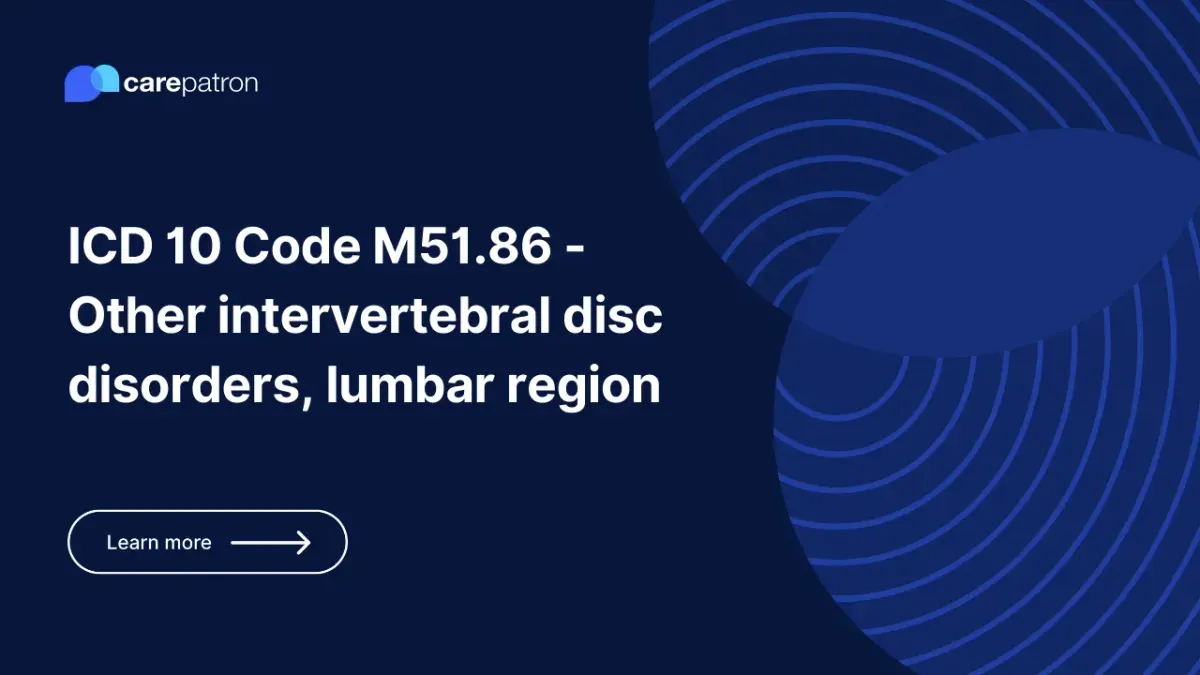
M51.86 – Other intervertebral disc disorders, lumbar region
Learn about ICD-10-CM M51.86 for lumbar disc disorders, including causes, symptoms, and treatment options.
Use Code
EHR and practice management software
Get started for free
*No credit card required
Free
$0/usd
Unlimited clients
Telehealth
1GB of storage
Client portal text
Automated billing and online payments
